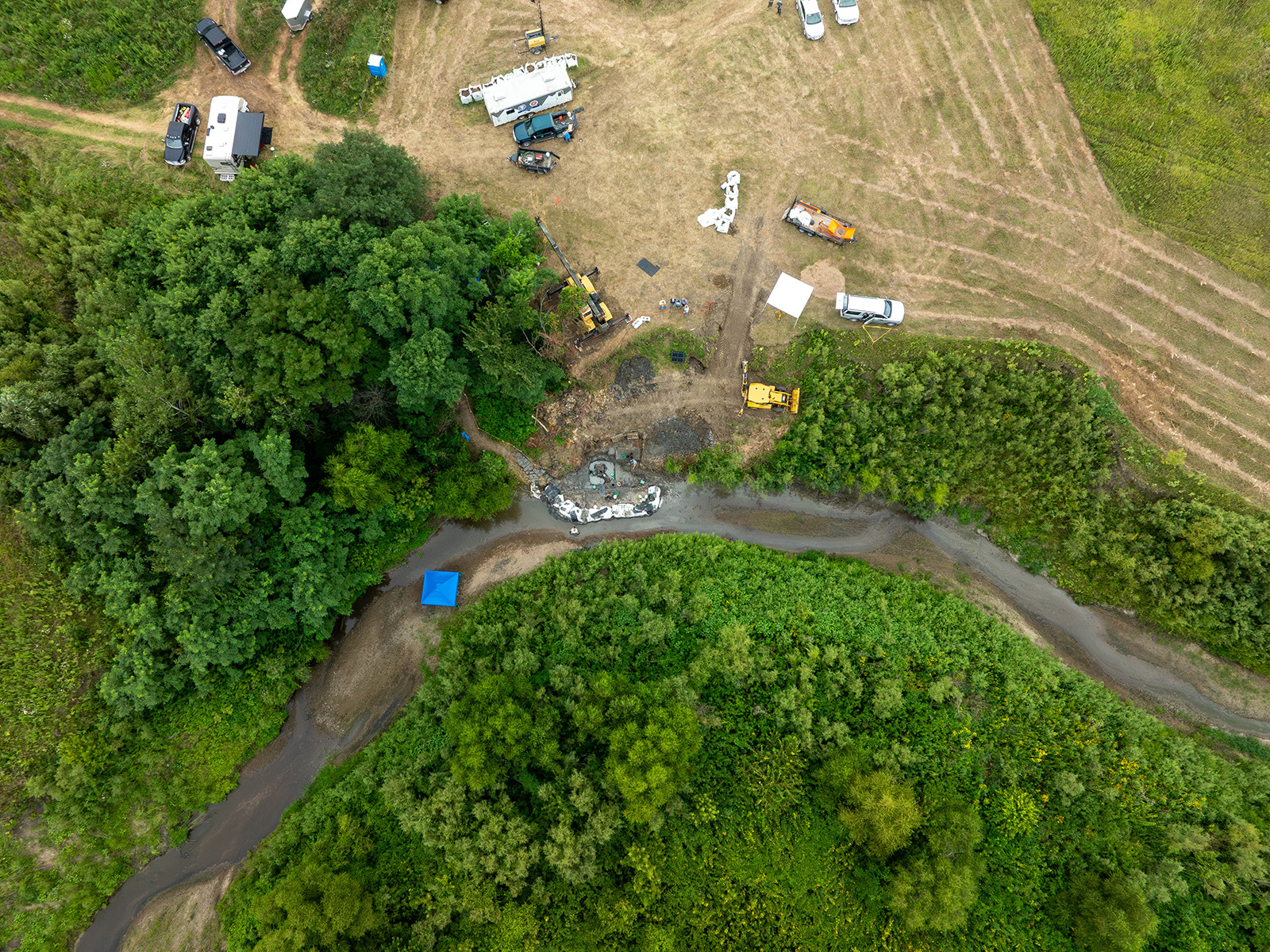Archaeologists in Iowa have uncovered parts of a mastodon fossil, including its skull, that they believe dates back to when the first humans lived on Earth.
Over the course of a 12-day excavation, staff from the University of Iowa's Office of the State Archaeologist worked with local community members to recover the bones. About 20 fragments were found, including a skull, rib sections, vertebra, a front leg bone and a kneecap, all believed to come from the same mastodon, according to a university news release.
The fossils were found in an eroded creek bed on private property in Wayne County, a rural area in the southern part of the state. The OSA said the find is Iowa's "first-ever well-preserved mastodon."
Radiocarbon dating allowed researchers to estimate that the mastodon is about 13,600 years old, which means it would have been alive at the same time humans were living and hunting in the area, according to the university.
Get top local stories in Philly delivered to you every morning. Sign up for NBC Philadelphia's News Headlines newsletter.

Now, researchers are turning their attention to unearthing evidence of human interaction with this mastodon. During the excavation, archaeologists found human-made artifacts like stone-tools. While they date to a few thousand years after the mastodon skull, they indicate "human existence in the creek drainage," something that has never been recorded before, the release said.
“We’re really hoping to find evidence of human interaction with this creature – perhaps the projectile points and knives that were used to kill the animal and do initial butchering,” Iowa State Archaeologist John Doershuk said in a statement. “There’s also potential evidence on the bones themselves – there could be identifiable cut marks.”
U.S. & World
Stories that affect your life across the U.S. and around the world.
Mastodons were large mammals related to elephants and mammoths. They roamed across North America about 3.5 million years ago before going extinct 10,500 years ago, according to the university release, shortly after the last Ice Age. Their extinction has been attributed by some scientists to climate change and human predation.
Archeologists were first notified of the potential existence of the bones in 2022, when a Wayne County resident contacted Doershuk: Someone they knew had stumbled upon an unusually long bone embedded in the creek bed.
The bone turned out to be a mastodon femur, spurring archaeologists to return last fall and continue their investigation. While there, they also uncovered a broken tusk protruding from the creek bed that they believed was likely still attached to a skull, according to the university. The team was finally able to complete their excavation this month after securing funding.

Doershuk called the tusk a "treasure trove of biological data about the animal" that could reveal information about the mastodon's age, sex and diet.
Once analyzed and conserved by university scientists, the mastodon bones will be displayed at the Prairie Trails Museum in Corydon, Iowa.
Mastodon fossils are relatively common in North America. In June 2023, a woman found a mastodon molar tooth while walking along a beach in California.



